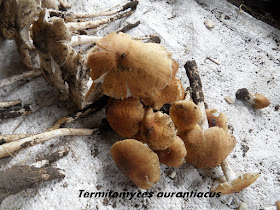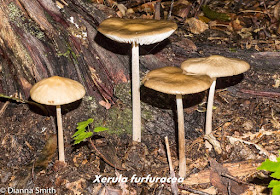Ongzi, a zeal HORTICULTURIST,yet resides in a plant-free apartment…… thinks that plants deserved to be treated as LIVING THING, not merely as plants …… strongly condemns any form of CRUELTY TO PLANTS, yet enjoys feast on them…… collects only e-HERBARIUM, and proudly encourages others to do the same……
Thursday, 29 December 2022
Monday, 5 December 2022
Thursday, 24 November 2022
Canarium amboinense - Kenari
Canarium amboinense Hochr. (1904)
Canarium indicum L (1759)
Canarium mehenbethene Gaertner (1791)
Canarium zephyrinum Duchesne (1836)
Canarium moluccanum Blume (1850)
Canarium commune L
Canarium indicum var. indicum
Canarium indicum var. platycerioideum Leenh
Indonesia : kenari ambon (Sudanese), kenari ternate (northernSulawesi, kanari bagea (Moluccas), jal (Ambon)
Panua New Guinea : red canarium. Galip(Pidgin), lawele (New Britain), hinuei (New Ireland)
Indonesia (Sulawesi, Moluccas, Irian Jaya), Papua New Guinea, Solomon Islands and surrounding islands. It is often cultivated, especially in Melanesia and sometimes elsewhere.
In Melanesia the seeds are highly esteemed as a food. Oil from the seeds is used as a substitute for coconut oil.
The wood is used especially for light construction, mouldings, interior finish, and as a firewood.
Thursday, 3 November 2022
Rare Fruit @ Negeri Sembilan : Beluluk
Buah kabong is the fruit of Arenga pinnata. It is a delicacy in Negeri Sembilan, especially in the Kuala Pilah district where its named buah beluluk. In Perak it is known as buah kanto, in Indonesia its called buah kolang-kaling.
Tuesday, 1 November 2022
Rare Fruit @ Negeri Sembilan : Kadam
Botany
Hodgsonia macrocarpa ( kadam, lardfruit ) is a fast-growing, evergreen climbing plant with tendrils. The plant produces large, edible seeds that are very rich in oil, thus the name lard seed.
The fruit is fibrous, about the size of a
coconut. Each fruit contains up to 8
large flat seeds.
Range
Native to tropical South East Asia, ranging from Myanmar, Thailand, Malaysia, Indonesia to Indochina.
It is usually grown wild by the riverbanks of primary, disturbed forest, and forest fringes.
Food
The seeds are often roasted or baked, has a pleasant taste. Seeds are often crushed and cooked with vegetables.
In district of Gemencheh and Johol of Negeri
Sembilan, the seeds are grated and kneaded with rice flour and limestone paste
( kapur sirih ), wrapped in palm
leaves ( daun palas ), and cooked in
boiling water.
Friday, 20 May 2022
Photo Credit @ Ongzi in Blumea : Decalobanthus elmeri
A synoptic revision of the golden glories, genus Decalobanthus (Convolvulaceae)
11. Decalobanthus elmeri (Merr.) A.R.Simões & Staples
Fig. 8 Decalobanthus elmeri (Merr.) A.R.Simões & Staples. a. Leaves showing peltate attachment of petioles; b. inflorescence with many buds in a more or less flat-topped, corymbiform arrangement; c. flower showing wide-spreading corolla limb and stamen filaments (all Ong Jyh Seng, no voucher).
https://www.researchgate.net/publication/360745514_A_synoptic_revision_of_the_golden_glories_genus_Decalobanthus_Convolvulaceae
Saturday, 26 February 2022
中国地理标志产品 : 福建省 之 花卉
所谓原产地域产品,是指“利用产自特定地域的原材料,按照传统工艺在特定地域内所生产的,质量、特色或者声誉在本质上取决于其原产地域地理特征并依照本规定经审核批准以原产地域进行命名的产品” 。
地理标志产品包括:
● 来自本地区的种植、养殖产品。
● 原材料全部来自本地区或部分来自其他地区,并在本地区按照特定工艺生产和加工的产品。



































